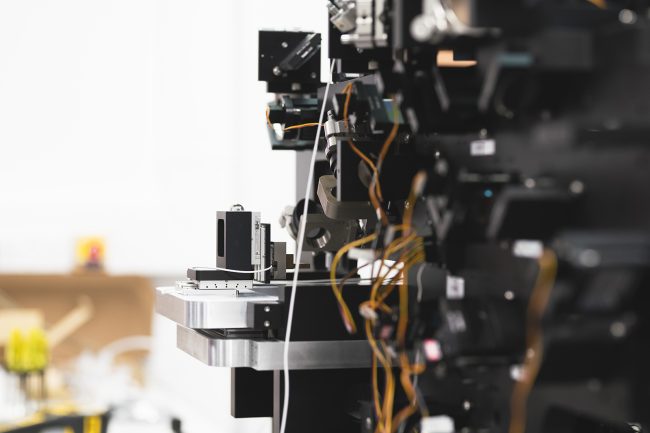It will enable researchers to study live cells, tissues, and molecular processes with unprecedented speed, clarity, and reduced photodamage – advancing our understanding of immune responses, disease mechanisms, and cellular interactions.
The BioCOP integrates multiple cutting-edge optical microscopy modules into a carefully designed single platform. The LLSM and SIM technologies are revolutionising live cell imaging by minimally invasive imaging with unprecedented spatiotemporal resolution. Compared to a confocal microscope, which is the current gold standard, LLSM imaging can produce volumetric data approximately 100 times faster at the same diffraction limited optical resolution of about 200 nm laterally and 500 nm axially.
It combines minimally invasive Lattice Light Sheet Microscopy (LLSM) and Structured Illumination Microscopy (SIM) based super-resolution imaging in one optical platform. This integration enables large field-of-view imaging of cells in their native states and quantify nanoscale processes such as following molecular organisation at unprecedented spatiotemporal resolution.
Additionally, BioCOP incorporates two-photon Bessel-beam light sheet microscopy and an adaptive optics correction system within the same platform. The former enables rapid deep-tissue imaging with a penetration depth of a few hundred micrometres with subcellular resolution, while the latter provides a way to compensate for optical aberrations caused by refractive index changes in thick biological samples, improving the resolution of visible wavelength range LLSM and SIM imaging. This microscope has the potential to transform quantitative correlative imaging in the biological sciences and alleviates the problem of limited spatiotemporal resolution when following the dynamics of living systems.
Furthermore, the microscope is equipped with seven excitation lasers and two highly sensitive cameras for correlative imaging. This enables live tracking of the cellular protein-protein interactome and of organelle dynamics at previously unattainable spatiotemporal resolutions. The added benefit of using the lattice light sheet technology is the highly reduced phototoxicity. This permits gentle illumination and extends the duration of imaging with minimal photodamage from seconds or minutes in a standard confocal to hours or days.
Including 3D-SIM technology in the same platform allows users to switch to super-resolution, achieving double the resolution in all three dimensions. Finally, the integration of state-of-the-art adaptive optics technology enhances light penetration into tissues up to 300 mm in depth while imaging with improved signal-to-noise ratio, enabling clearer and more detailed imaging of biological processes.
From a technological perspective, the open and bespoke design of the BioCOP allows for further integration with other state-of-the-art, live-cell imaging modalities, such as multispot Image Scanning Microscopy (multi-ISM). Additional developments will include spectroscopic methods for quantitative multidimensional imaging and the integration of machine learning-based event recognition. This will enable the microscope to automatically switch between various imaging modes based on specific biological questions.





